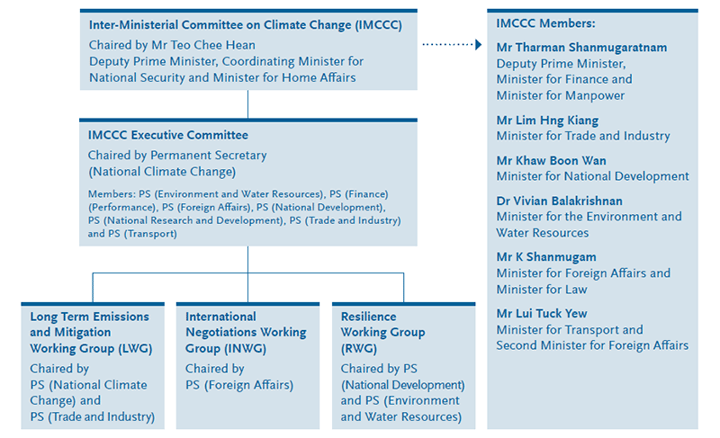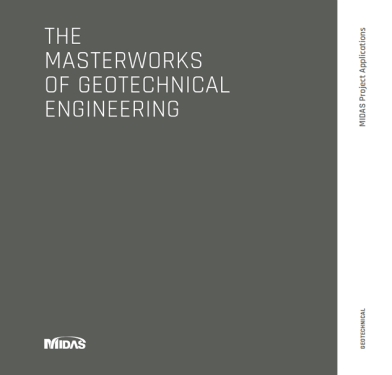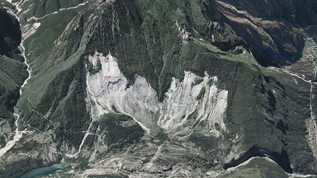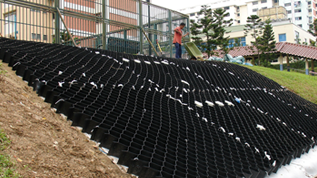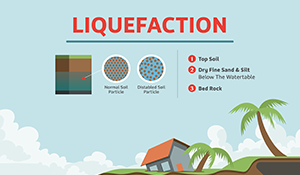👇 Watch the popular case study webinar
Unsaturated Slope Stability Analysis using GTS NX
Adaption measures for rainfall-induced slope failures based on unsaturated soil mechanics (Part 2)
(>> Part 1: Failures of unsaturated soil slopes)
1. Possible adaptation measures related to policy in Singapore
Singapore, being a responsible global citizen within the international community, is committed to do its part in the global effort to address climate change. This was underlined during the Singapore Parliament Committee of Supply Debate in 2012, where Deputy Prime Minister Teo Chee Hean spoke on Singapore’s vision “to be a climate-resilient global city that is well-positioned for green growth (needing) a whole-of-nation effort – involving the people, the private and the public sectors to realize (this) vision…together, (ensuring) Singapore remains a vibrant and liveable nation for our future generations” (NCCS, 2012).
The National Climate Change Secretariat (NCCS), a dedicated unit established under the Prime Minister’s Office (PMO) ensures effective coordination on Singapore’s Domestic and international policies, plans, and actions on climate change. A national strategy, supported by committees and workgroups to address climate change-related issues, is shown in Figure 1.1 (NCCS, 2012).
Figure 1.1. Formation of committees and workgroups
In 2007, a national study examining the long-term effects of climate change on Singapore was carried out. It was found that the mean sea level around Singapore could rise by up to 0.65m, and temperatures could increase by up to 4.2 ̊C in 2100. These findings are comparable to those reported in the Fourth Assessment Report (AR4) and Fifth Assessment Report (AR5) by the IPCC. Key findings are summarized in Table 2.1. Over time, findings will be updated as climate science and models improve. Adaptation planning would benefit significantly from robust scientific analyses of climate change effects and impacts.
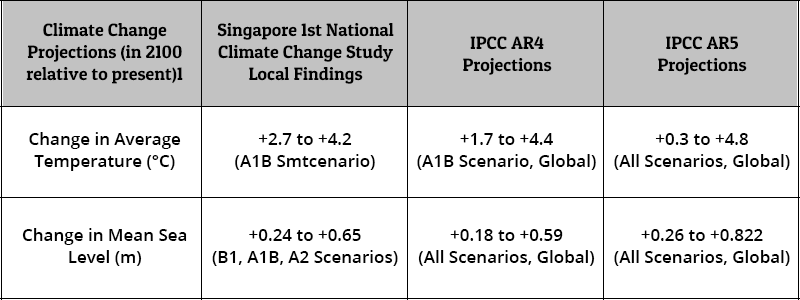
Table 2.1. Key findings of the Singapore Climate Change Study (NEA, 2013)
**Notes: 1Studies to assess future change in rainfall for Singapore are ongoing.
2Ice sheet melt processes have been better quantified in AR5.
Therefore, in March 2013, the Meteorological Service Singapore (MSS) established the Centre for Climate Research Singapore (CCRS) to build up in-house capability in climate science and climate modeling. This will augment Singapore’s national preparedness for climate change and help policymakers make informed decisions. Facing a relatively uncertain future, yet not having the luxury of time to debate on the causes of climate change to be completely settled before taking any action, Singapore takes on early preparations to adapt to climate change impacts – via a four-fold approach: reduce carbon emissions in all sectors; be ready to adapt to climate change; harness green growth opportunities; and, forge partnerships (NCCS 2012).
Working alongside mitigation efforts, adaptation measures are strategically implemented to reduce the damaging impact of climate change and increase resilience to potential future effects, via the adoption of a resilience framework, as shown in Figure 2.2.
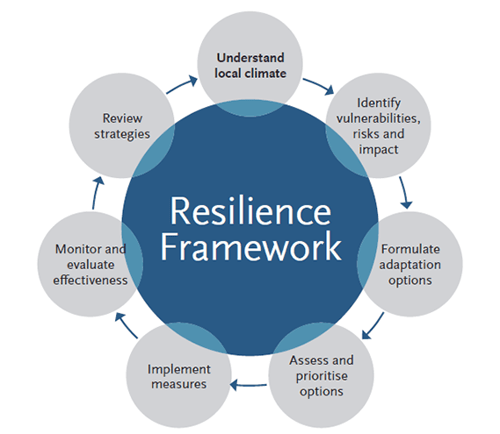
Figure 2.2. Singapore’s Adaptation Approach (NCCS, 2012)
2. BCA Preparedness to safeguard slope safety and slope protection structure resilience
As safety is mission-critical to BCA, continue efforts like review and step up the Building Control Regulations, initiating the 3 s-stage slope risk management framework, conducting public communication program, and setting up the efficient incident management framework to enhance slope and slope protecting structure safety regardless of the impacts of climate change. In preparing Singapore build environment for the changing climate with exceptional heavy rainfall, under the Singapore building regulation slopes and slope protection structures, slopes are to be designed to withstand the most onerous groundwater conditions. In addition, the Professional Engineering Board (PEB) also set up enhanced requirements in qualifying PEs to register as Professional Engineers (Geotechnical) (PE Geo). On the regulatory framework, BCA also revised the submission guideline for engineered slope and slope protection which required certification from PE Geo and Accredited Checker (AC) submission.
2.1 Regulation of structural safety
The Building Control Regulation of structural stability and safety also applies to slope and slope protection structures. The lifecycle of a slope protection structure starts from the conceptual plan, adequate design, and quality construction. It is followed by mandatory regular inspection and proper maintenance before it is demolished and rebuilt. Figure 3.1 shows how the Building Control Regulation is applied to the lifecycle of a slope protection structure.
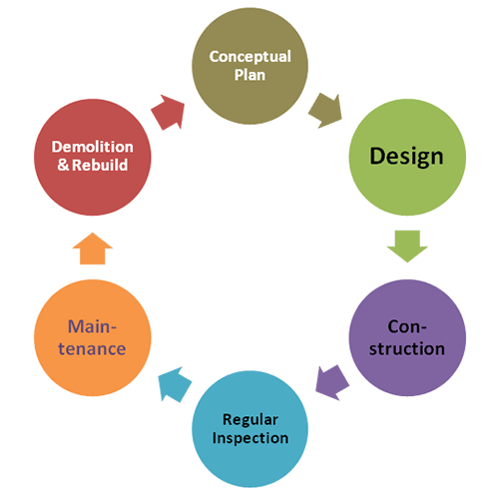 Figure 3.1. Application of Building Control Regulation
Figure 3.1. Application of Building Control Regulation
on the lifecycle of a slope protection structure
In the design stage, developers (or owners) are required to appoint a Professional Engineer (PE) to design and submit structural plans of buildings and infrastructures (e.g. road, tunnel, railway structure, bridge, viaduct, and embankment) to Building Construction Authority (BCA) for approval as required under the current Building Control Act. This requirement is applicable to slope and slope protection structures. It is an offense to carry out building works without first obtaining plan approval and will on conviction be liable to fine, imprisonment, or both.
In 2004, BCA sent circulars requiring slopes and slope protection structures to be designed to withstand the most onerous groundwater conditions. The purpose of this requirement is to enhance their robustness against slope instability as a result of uncertainty in the fluctuation of the groundwater regime. In addition, the provision of effective drainage systems such as weep holes in earth retaining structures and surface water run-off drain, as well as protection to slope surface are important design considerations.
Upon plan approval, construction works can only commence after obtaining a permit from BCA to carry out building works. During construction, the PE appointed by the developer is required to supervise the building works. The builder is required to carry out the works in compliance with the approved plan. Upon completion of the building works, the PE is required to submit as-built plans and a certificate of supervision while the builder is required to submit the certificate of completion of building works.
Failure to comply with these requirements is an offence and will on conviction be liable to fine, imprisonment, or both. During the serviceability stage, all buildings other than landed residential houses are subjected to Periodic Structural Inspection (PSI) under Part V (Inspection of Buildings) of the Building Control Act. Besides building structures, visual inspection would have to cover inspection of earth retaining walls and other slope protection structures. It is an offence for not carrying out PSI as required under the Act and will on conviction be liable to a fine.
However, PSI is not applicable to landed residential houses. Thus, it is important for the owners (private and government agencies) of these properties to fulfill their duty and responsibility by initiating their own regular inspection and maintenance of the slope or slope protection structures. They are advised to engage a PE to inspect, assess and advise on rectification if they detect structural defects in their buildings. In Singapore, owners are responsible for the maintenance of their properties in a good and safe condition. This includes slope and slope protection structures.
Therefore it is in their interest to protect these properties to avoid undesirable damage, injury, and loss of lives. In this way, it would prevent their financial losses that could be many times more than the routine maintenance cost.
2.2 Periodic Structural Inspection (PSI)
The mandatory periodic structural inspection (PSI) regime is one that is proactive and unique to Singapore. Most exposed slopes in Singapore are composed of unsaturated residual soils which rely on matric suction immediately below the surface for stability. This can be greatly reduced or destroyed by heavy prolonged rainfall, burst underground piping, or damaged drainage. The inspection guideline covers both retaining walls and slope protection structures. Inspecting PEs will be required to give their assessment of the structural integrity and safety of such structures. During inspection, the PE can look out for some early warning signs. To the diligent engineer investigation for the above warning signs may involve inspecting the environment outside the site and removing surface covering locally to check for signs of distress. If opportunity allows, it is recommended to inspect just after a rainstorm in order to check the functionality of the drainage system.
Apart from regulation, BCA conducts public seminars to communicate with the public highlighting that regular inspection and maintenance are critical as the slope stability and integrity of slope protection structure would over time deteriorate. Therefore, it is prudent that owners, management corporations, or property managing agents take preventive measures by carrying out regular inspection and maintenance such as clear accumulated debris from drainage channels and slope surface, repair cracked or damaged drainage channels, pavement, and slope surface cover, unblock weep holes and outlet drainpipes, remove or clear any vegetation causing severe cracking of slope surface, cover and drainage channels, re-turf bare slope surface areas, remove undesirable vegetation from the retaining walls, repair or replace rusted steel for the slope protection structure elements and fill any gap behind the earth retaining structures.
2.3 BCA's response management against landslides and slope failure
In the event of landslides and/or slope failure incidents occur, BCA will utilize a systematic incident management workflow to ensure an efficient and high productivity response to the incident. Figure 3.2 describes the workflow sequence on how S24A (Dangerous Slope Order) and S25 (Closure Order) are served in the event of landslides and slope failure which endangered public safety.
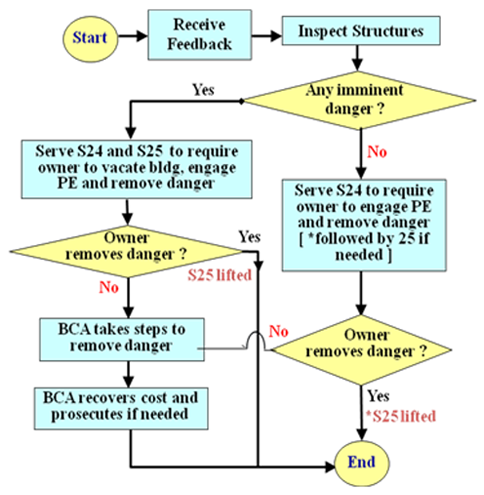
Figure 3.2. BCA work procedure to serve S24A and S25
The current policy is sufficient as an adaptation measure against climate change. There is no need to change the current policy. The owners of the landed property must engage Qualified Person (QP) to inspect the high-risk slope nearby their residential area.

References
- National Climate Change Secretariat (2012). Climate Change and Singapore: Challenges, Opportunities, Partnerships.
- National Environment Agency (2013). Annual report: Building a sustainable environment.


